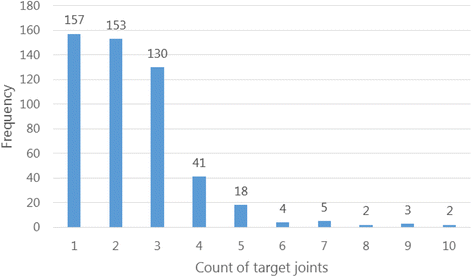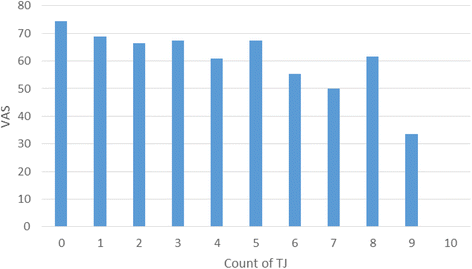The impact of severe haemophilia and the presence of target joints on health-related quality-of-life
- PMID: 29720192
- PMCID: PMC5932770
- DOI: 10.1186/s12955-018-0908-9
The impact of severe haemophilia and the presence of target joints on health-related quality-of-life
Abstract
Background: Joint damage remains a major complication associated with haemophilia and is widely accepted as one of the most debilitating symptoms for persons with severe haemophilia. The aim of this study is to describe how complications of haemophilia such as target joints influence health-related quality of life (HRQOL).
Methods: Data on hemophilia patients without inhibitors were drawn from the 'Cost of Haemophilia across Europe - a Socioeconomic Survey' (CHESS) study, a cost-of-illness assessment in severe haemophilia A and B across five European countries (France, Germany, Italy, Spain, and the UK). Physicians provided clinical and sociodemographic information for 1285 adult patients, 551 of whom completed corresponding questionnaires, including EQ-5D. A generalised linear model was developed to investigate the relationship between EQ-5D index score and target joint status (defined in the CHESS study as areas of chronic synovitis), adjusted for patient covariates including socio-demographic characteristics and comorbidities.
Results: Five hundred and fifteen patients (42% of the sample) provided an EQ-5D response; a total of 692 target joints were recorded across the sample. Mean EQ-5D index score for patients with no target joints was 0.875 (standard deviation [SD] 0.179); for patients with one or more target joints, mean index score was 0.731 (SD 0.285). Compared to having no target joints, having one or more target joints was associated with lower index scores (average marginal effect (AME) -0.120; SD 0.0262; p < 0.000).
Conclusions: This study found that the presence of chronic synovitis has a significant negative impact on HRQOL for adults with severe haemophilia. Prevention, early diagnosis and treatment of target joints should be an important consideration for clinicians and patients when managing haemophilia.
Keywords: Disease burden; Haemophilia; Health-related quality of life; Joint disease; Patient-reported outcome measures.
Conflict of interest statement
Ethics approval and consent to participate
The CHESS study was reviewed by the Research Ethics Sub Committee of the Faculty of Health and Social Care within the University of Chester. Patient consent for use of clinical data was not required (as per European Pharmaceutical Market Research Association (EPhMRA) guidelines). Patient consent was obtained via tick box selection for the PSC element of the study.
Competing interests
LW and CH are employees of Novo Nordisk.
Publisher’s Note
Springer Nature remains neutral with regard to jurisdictional claims in published maps and institutional affiliations.
Figures
References
-
- World Federation of Hemophilia. Guidelines for the Management of Hemophilia [Internet]. 2012. Available from: https://www1.wfh.org/publication/files/pdf-1472.pdf.
MeSH terms
LinkOut - more resources
Full Text Sources
Other Literature Sources
Medical





